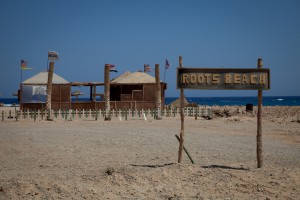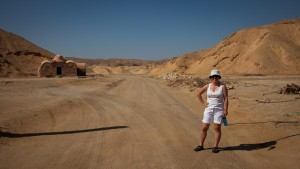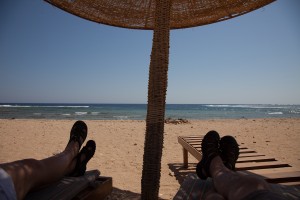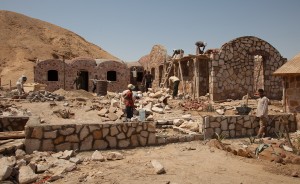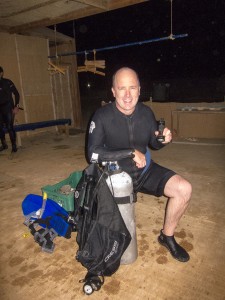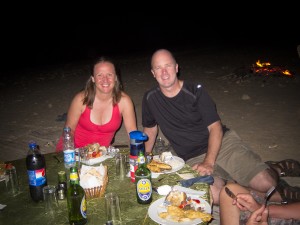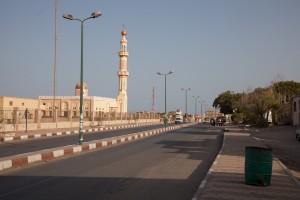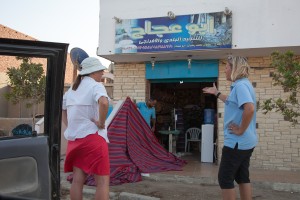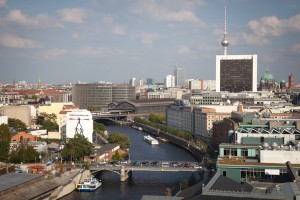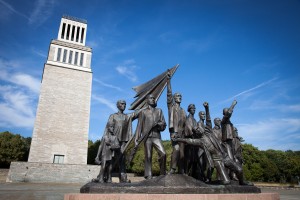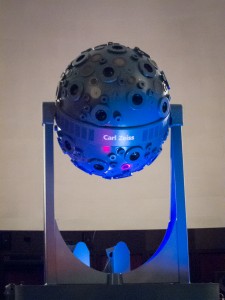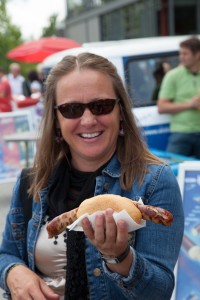 With images of majestic castles and stunning landscapes dancing in our heads, we set off for a three week tour of Ireland. We were in search of a romantic maybe even nostalgic vision of Ireland that we had somehow conjured up in our minds, perhaps based on clever marketing that we had unwittingly absorbed, movies we have watched over the years and literature we have read. Would we find this image of Ireland or was this a figment of our overactive imaginations?
With images of majestic castles and stunning landscapes dancing in our heads, we set off for a three week tour of Ireland. We were in search of a romantic maybe even nostalgic vision of Ireland that we had somehow conjured up in our minds, perhaps based on clever marketing that we had unwittingly absorbed, movies we have watched over the years and literature we have read. Would we find this image of Ireland or was this a figment of our overactive imaginations?

The Route
Our trip began and ended in Dublin, following a counter clockwise circuit around the island mainly along secondary coastal roads for a total distance of just under 2600 km. We drove each day, some days more than others, but we always managed to get out and do or see something along the way. Our rented car, a no frills Skoda proved to be very reliable and surprisingly quite comfortable.
Driving and navigating
Chris was the driver and I was the navigator, roles that suited us well. By the time we arrived in Ireland, Chris had already spent a few weeks mastering the art of driving on the wrong side of the road in a car where the driver’s seat and stick shift were also on the wrong side. Now all he had to do was master the roads – curvy, winding, and narrow with barely inches to spare on either side. And then there were the single track roads where, as the name implies, there is only room for a single vehicle at a time, even though traffic comes from both directions. It took steely concentration and a steady grip on the wheel to travel these roads. Chris may have been a race car driver in a previous life because I swear he was in his element on these roads. He demonstrated his skill as a driver more than once as he managed tricky turns and tight squeezes with nerves of steel.
Navigating was a challenge to say the least. I was well equipped with a couple of detailed maps along with a lovely guide book called Back Roads of Ireland which offered detailed directions for some of the more scenic routes. Directions that read something like this: When you get to the Y in the road, proceed left until you see the farm house where you should turn right and then right again after the first farm building, etc. etc. Seriously, that’s what the directions were like much of the time. It was even worse if we asked someone because then we had the added challenge of trying to decipher the accent, which was often quite thick and quite incomprehensible to our untrained ears.
 This is not an optical illusion – the road narrowed in places
This is not an optical illusion – the road narrowed in places
so that two cars could not pass easily and there wasn’t much
room to pull over to the side either.
 A single track road in County Donegal.
A single track road in County Donegal.
The posted signs presented different challenges. Road signs never indicated which direction (north, south, east or west) but rather pointed to a town along the way and maybe if I was lucky provided the route number which may or may not appear on my map. That’s fine if you know all the towns in the area, otherwise, it’s a mad scramble reading the map to see which town is in the right direction. The inconsistent and sporadic road signs offered even more challenges. For example, we would be following a sign for a castle which would nicely appear for a brief period of time, only to disappear completely when you reached a T junction – which way to go? Who knows since there isn’t any indication one way or the other! Needless to say, we went the wrong way more than once, but luckily, I seem to have a 6th sense for when we have made a miscalculation and so I managed to get us back on track quite quickly. Oh, and the signs were displayed in both Irish and English which made things even more confusing at times.
The Weather
They don’t call it the Emerald Isle without reason. Sure, the landscape is a dazzling shade of green, but it’s no wonder with all the rain. It rained every single day. Some days we did manage to have more sun than rain but these were rare and definitely the exception. We began to measure the quality of the weather based on the degree to which it was raining – a mere drizzle versus torrential downpours. And it was never hot. I never wore sandals or a dress. I think it got a little warm one day on a hike, but then that only lasted for a little while until the sun hid behind the clouds again. Some days were downright cold, cold enough for woolen hats and gloves donned by those who seemed prepared for the worst. Now to be fair, everyone we met told us this was an exceptionally bad summer. Some went so far as to say it was the worse summer they could remember, some went even further saying it was the worse summer ever.
We were determined not to let the weather negatively impact our tour so we did our best to cope. I think we sunk to a new low in the Connemara region which is an absolutely stunning area in the west of Ireland with miles of hiking trails not the least of which is the famous Croagh Patrick, a challenging pilgrimage hike to the top of a steep mountain. Torrential downpours had already forced us off the road prematurely in the little town of Westport where we checked into a cozy B&B in the early afternoon. It was the perfect afternoon to spend indoors, snuggled up on comfy couches, sipping steaming cups of tea, nibbling on biscuits, and reading a good book. And this is exactly what we did. When the rain finally stopped in the early evening, we ventured out for a stroll down to the harbour only get soaked to the skin as the rain started up with new vigour mid way through our walk. The rain continued hard all night and into the next day as we drove out of the region.
The People
 The Irish have a reputation for being friendly and hospitable and we can attest this to be true. Without exception, the people we came into contact with were welcoming, friendly and very helpful. The owners of the B&B’s where we stayed were very hospitable and interested in our comfort and well-being, just like visiting old friends. The friends we did visit were over the top hospitable towards us. Andrew from Belfast, who we had met on our Antarctica cruise last January, went out of his way touring us around the city, doing research on our behalf, organizing a day hike in the mountains, and paying for everything along the way. Another friend, Paul, who we met on a Caribbean cruise several years ago, treated us to a round of pints one night out at the Crowne, the oldest pub in Belfast. Even Andrew’s friend Susan, who had never even met us before, treated us throughout the day when we hiked the Mourne Mountains.
The Irish have a reputation for being friendly and hospitable and we can attest this to be true. Without exception, the people we came into contact with were welcoming, friendly and very helpful. The owners of the B&B’s where we stayed were very hospitable and interested in our comfort and well-being, just like visiting old friends. The friends we did visit were over the top hospitable towards us. Andrew from Belfast, who we had met on our Antarctica cruise last January, went out of his way touring us around the city, doing research on our behalf, organizing a day hike in the mountains, and paying for everything along the way. Another friend, Paul, who we met on a Caribbean cruise several years ago, treated us to a round of pints one night out at the Crowne, the oldest pub in Belfast. Even Andrew’s friend Susan, who had never even met us before, treated us throughout the day when we hiked the Mourne Mountains.
 Chris with his cruise buddies: Andrew (left) and Paul (right)
Chris with his cruise buddies: Andrew (left) and Paul (right)
 Hiking with Andrew and his friend Susan in the Mourne Mountains.
Hiking with Andrew and his friend Susan in the Mourne Mountains.
The weather was great when we started but then it got
progressively worse until we could barely see 10 feet ahead of us.
I got a little nervous when Andrew ventured off the path (below).

 We visited Pauline and her family on their farm just south of Dublin. You may recall that we met Pauline while walking the Camino de Santiago. We had never met her parents or her sister who also lives in London, yet they opened their home up to us without hesitation and showered us with a generous dose of Irish hospitality. We enjoyed a weekend of wholesome activities that included plenty of visiting with Pauline’s family, checking out a photography exhibition, and an art show that highlighted the work of local artists including sculptures by Marion, Pauline’s mom, and gorgeous needlepoint by Pauline’s Aunt Ann. We watched her nephew play an Irish football match at the local soccer pitch and we were given a brief demo by her younger nieces and nephews of the sport of Hurling which is unique to Ireland and Scotland. It was a very relaxing and grounding weekend for us on the family farm, being around Pauline’s family, engaged in wholesome activities, taking a little break from our travelling routine.
We visited Pauline and her family on their farm just south of Dublin. You may recall that we met Pauline while walking the Camino de Santiago. We had never met her parents or her sister who also lives in London, yet they opened their home up to us without hesitation and showered us with a generous dose of Irish hospitality. We enjoyed a weekend of wholesome activities that included plenty of visiting with Pauline’s family, checking out a photography exhibition, and an art show that highlighted the work of local artists including sculptures by Marion, Pauline’s mom, and gorgeous needlepoint by Pauline’s Aunt Ann. We watched her nephew play an Irish football match at the local soccer pitch and we were given a brief demo by her younger nieces and nephews of the sport of Hurling which is unique to Ireland and Scotland. It was a very relaxing and grounding weekend for us on the family farm, being around Pauline’s family, engaged in wholesome activities, taking a little break from our travelling routine.
 Pauline’s family home where we spent a relaxing weekend.
Pauline’s family home where we spent a relaxing weekend.
I must share another wee tale that happened along the way, this time when we visited the town of Kinsale. This story begins with a load of dirty laundry. You’d be surprised at what a challenge it can be to take care of some of the mundane chores like laundry while travelling. By the time we reached Kinsale we were desperate for clean clothes and so we found ourselves with a few hours to kill as we waited for our laundry to be done. We spent our morning on a historical walking tour run by a man named Dermott Ryan. He came highly recommended by the lady at our B&B so we sought him out even though it was raining.
 Off we went with Dermot in the rain listening to his wealth of stories about the town. Then he started to tell us about Timothy and Mortimer McCarthy, two local brothers born in the late 1800’s. These experienced seamen had made several Antarctica expeditions with Scott and Shackleton, including the voyage on Shackleton’s famous expeditions to Antarctica. He told us the story of Shackleton’s shipwreck and how he traversed 800 miles in a small boat back to South Georgia to get help to rescue his crew who he had left on Elephant Island struggling for survival in the dead of winter. For regular blog readers, this might sound oddly familiar as it is indeed the same story I shared with you when we walked in the footsteps of Shackleton as he made his infamous trek on South Georgia. We told Dermot that we had been there – we had seen the bluff of land where the crew huddled for months waiting for rescue, we had hiked the same mountain as Shackleton, we had seen the remnants of the whaling station where he found help. Dermot looked at us with surprise and awe – he had never met anybody who had been to Antarctica before. He insisted on giving us a book produced by the local Historical Society, of which he is president. The book is full of historical tales related to Kinsale. In next year’s edition, there may even be a story about the Canadian couple who passed through Kinsale on holiday who had previously visited Antarctica….who would have thought we’d make history in Ireland!
Off we went with Dermot in the rain listening to his wealth of stories about the town. Then he started to tell us about Timothy and Mortimer McCarthy, two local brothers born in the late 1800’s. These experienced seamen had made several Antarctica expeditions with Scott and Shackleton, including the voyage on Shackleton’s famous expeditions to Antarctica. He told us the story of Shackleton’s shipwreck and how he traversed 800 miles in a small boat back to South Georgia to get help to rescue his crew who he had left on Elephant Island struggling for survival in the dead of winter. For regular blog readers, this might sound oddly familiar as it is indeed the same story I shared with you when we walked in the footsteps of Shackleton as he made his infamous trek on South Georgia. We told Dermot that we had been there – we had seen the bluff of land where the crew huddled for months waiting for rescue, we had hiked the same mountain as Shackleton, we had seen the remnants of the whaling station where he found help. Dermot looked at us with surprise and awe – he had never met anybody who had been to Antarctica before. He insisted on giving us a book produced by the local Historical Society, of which he is president. The book is full of historical tales related to Kinsale. In next year’s edition, there may even be a story about the Canadian couple who passed through Kinsale on holiday who had previously visited Antarctica….who would have thought we’d make history in Ireland!
As we have observed before in our travels, it is the people who we meet that make the difference and make our experiences more authentic and memorable, and Ireland was no exception.
Accommodations

Kilmurvey House B&B, Aran Islands
With no fixed itinerary and no set plans, we had no idea where we would be each day which made it impossible to book any rooms in advance. Normally, this would have been a problem at the height of high season, but this year has been a bad year for tourism (could there be a correlation with the weather perhaps?) and so it worked out quite well for us. We usually stopped in the early evening between 7:00 and 8:00. We would make a decision as to where to sleep with the help of information acquired from local tourist offices, the options listed in our three guide books, as well as just driving by. We were turned away only a couple times because the place was full. Usually, there was plenty of availability.
In an effort to keep our costs down, we stayed in hostels whenever possible. We were surprised at the number and quality of hostels we found along the way. Most offer private rooms with ensuites and only once we stayed in a dormitory style room with two other people. Some hostels even included a continental breakfast. Whenever we stayed in a hostel, we took advantage of the kitchen facilities and prepared our own food, another cost savings.

Carrigeen Castle, Cahir
We stayed in B&Bs whenever we couldn’t find a hostel. All B&Bs in Ireland offer a hearty, stick to the ribs hot breakfast, known as the Full or Irish breakfast, as well as continental options such as cereal, fruit and yogurt. Some B&Bs offered additional homemade goodies like scones, jams and bread. Invariably, a B&B breakfast would keep us going until later afternoon. I think our favourite B&B was Kilmurvey House on the Aran Islands and our most unusual B&B was Carrigeen Castle in Cahir. This B&B resembled a medieval castle although we later learned that while it had been designed and built in the 1800’s to look like a castle, it’s original purpose was as a gaol, providing short term stays for prisoners before they were sent off to the main jail elsewhere. It has been run as a B&B by the same family for over 30 years! This is the closest we got to staying in a castle.

Food and Drink
Eating nutritiously while travelling is a challenge at the best of times but we found it particularly difficult in Ireland. First there are the breakfasts which do offer many nutritious choices, but we often opted for the full Irish breakfast which comprised of a fried egg, fried bacon, breakfast sausage, black pudding, toast, and sometimes baked beans. It was a hearty way to start the day. After a few of these breakfasts, we began to alternate between the artery clogger and more healthier choices that included yoghurt, fruit and granola, often homemade.
Bar food was so readily available and tempting that we often settled for this type of food which wasn’t always the healthiest choice to make, although it was usually quite tasty. Seafood is plentiful; Ireland is afterall an island surrounded by the sea. Whenever we could, we tried to make our own food, and we always had on hand supplies to make peanut butter and jelly sandwiches, our preferred hiking lunch.
We found the prices to be high and since we were trying to economize wherever we could, we were not eating in the best (and most expensive) restaurants. We did have the occasional meal that was impressive and memorable, but this was the exception rather than the rule.
 What’s a visit to Ireland without a visit to the local pub? Chris swears that Guinness tastes better on home soil. A tour of the Guinness Storehouse museum in Dublin was high on Chris’ priority list. Local music was plentiful in the local pubs in the evening. Often, musicians would just show up in a pub and spontaneously jam together. We loved this type of entertainment, more so than the hired gigs which were more tourist oriented.
What’s a visit to Ireland without a visit to the local pub? Chris swears that Guinness tastes better on home soil. A tour of the Guinness Storehouse museum in Dublin was high on Chris’ priority list. Local music was plentiful in the local pubs in the evening. Often, musicians would just show up in a pub and spontaneously jam together. We loved this type of entertainment, more so than the hired gigs which were more tourist oriented.
 Bushmills Distillery has been producing Irish Whiskey since 1608 which makes it the longest continuously running distillery in the world. During a tour we learned the differences between Irish Whiskey and Scotch Whisky (besides the spelling of the word “whiskey/whisky”): Irish Whiskey does not use peat when drying the barley, and it is triple distilled rather than double distilled. Of course the Irish think their drink is superior, but in Scotland it was the other way around.
Bushmills Distillery has been producing Irish Whiskey since 1608 which makes it the longest continuously running distillery in the world. During a tour we learned the differences between Irish Whiskey and Scotch Whisky (besides the spelling of the word “whiskey/whisky”): Irish Whiskey does not use peat when drying the barley, and it is triple distilled rather than double distilled. Of course the Irish think their drink is superior, but in Scotland it was the other way around.
The Sights
We saw castles and grand manor houses, ancient ruins and monuments, historic memorial tombs and cemetaries, gorgeous landscapes and stunning gardens. We hiked mountains and ambled along miles of beaches. There was never a shortage of things to do or see everywhere we went.
Stay tuned for Ireland Part 2 where we’ll share our photos from some of the highlights of our trip and we’ll let you know if Ireland lived up to our expectations.
************************
Travel Tip #1: If you plan to visit 2-3 historical sites, consider purchasing a Heritage Card. For 21 euros, you gain access into close to a hundred sites for a period of one year. We purchased our card at the first castle we visited on our very first day in Ireland and made good use of the card thereafter.
Travel Tip #2: Budget travellers should not be deterred by the label “Youth Hostel” as these facilities are used by young and old alike. We even saw several young families availing themselves of these modest accommodations. Private rooms ranged in priced from 20 – 25 euro per person.
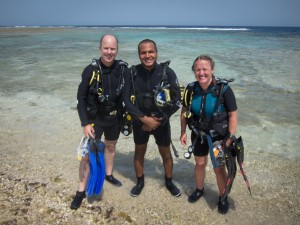 Diving in the Red Sea was everything we were hoping for and then some. Over the eight days at Roots Camp, we dove on four days plus Chris did a night dive. We saw beautiful, colourful coral like we have never seen before. There was an abundance of fish of all sizes, as well as sea turtles and, much to our amazement, dolphins. That’s right. During one of our dives, a group of 10 blue nosed dolphins slowly swam by us, within a couple of metres. They seemed as curious about as as we were of them. In fact as the group passed, one turned around to take another look at us and for a moment it looked like he was coming back to play, but in the end he continued on with the rest. It is was quite something to see dolphins in their natural habitat and in such close proximity.
Diving in the Red Sea was everything we were hoping for and then some. Over the eight days at Roots Camp, we dove on four days plus Chris did a night dive. We saw beautiful, colourful coral like we have never seen before. There was an abundance of fish of all sizes, as well as sea turtles and, much to our amazement, dolphins. That’s right. During one of our dives, a group of 10 blue nosed dolphins slowly swam by us, within a couple of metres. They seemed as curious about as as we were of them. In fact as the group passed, one turned around to take another look at us and for a moment it looked like he was coming back to play, but in the end he continued on with the rest. It is was quite something to see dolphins in their natural habitat and in such close proximity. Creating my own shade in between dives where we had to wait
Creating my own shade in between dives where we had to wait A Praying Mantis – the only one we saw.
A Praying Mantis – the only one we saw. I was quite content to lounge around the beach, reading my book all day long (thank goodness for my Kindle) but Chris was drawn to the construction site like a bee to honey. There was a large crew working on several new chalets and they were under a tight deadline to complete three units before guests arrived on Friday. Chris was certain they wouldn’t be done in time (for the record, one was completed by 11:00 pm Friday night) and he checked on the crew’s progress each day, keenly interested in their construction techniques and a little aghast by the lack of safety on the work site. I think Chris was in his element when Steve, the camp manager, asked if he would like a small project to do, one that would require the use of power tools. And so Chris took on a small woodworking project – a decorative piece of wood to fill in the gap at the top of a door frame. Chris agreed to build two of them. In his design, he decided to get creative and add a mosaic element, or I should say, he decided I would add the mosaic to the frame he was building. I was less than enthusiastic to be drawn into his project because mosaics are a lot of work, they require special tools of which we had none, and they take a lot of time to create. Seeing Chris’ enthusiasm and happiness working in the workshop, I reluctantly agreed to help out. I smashed all the tiles with a sledge hammer, my only tool, and created both designs. But time was running out so I enlisted Chris to help out with the final execution – cementing the tiles down and grouting. I must admit to some satisfaction when Chris commented on how much work and how difficult it was to do the mosaics, he had no idea they were so hard to do. And to his credit, his mosaic turned out pretty good. And so we left our mark, good or bad, on Roots Camp.
I was quite content to lounge around the beach, reading my book all day long (thank goodness for my Kindle) but Chris was drawn to the construction site like a bee to honey. There was a large crew working on several new chalets and they were under a tight deadline to complete three units before guests arrived on Friday. Chris was certain they wouldn’t be done in time (for the record, one was completed by 11:00 pm Friday night) and he checked on the crew’s progress each day, keenly interested in their construction techniques and a little aghast by the lack of safety on the work site. I think Chris was in his element when Steve, the camp manager, asked if he would like a small project to do, one that would require the use of power tools. And so Chris took on a small woodworking project – a decorative piece of wood to fill in the gap at the top of a door frame. Chris agreed to build two of them. In his design, he decided to get creative and add a mosaic element, or I should say, he decided I would add the mosaic to the frame he was building. I was less than enthusiastic to be drawn into his project because mosaics are a lot of work, they require special tools of which we had none, and they take a lot of time to create. Seeing Chris’ enthusiasm and happiness working in the workshop, I reluctantly agreed to help out. I smashed all the tiles with a sledge hammer, my only tool, and created both designs. But time was running out so I enlisted Chris to help out with the final execution – cementing the tiles down and grouting. I must admit to some satisfaction when Chris commented on how much work and how difficult it was to do the mosaics, he had no idea they were so hard to do. And to his credit, his mosaic turned out pretty good. And so we left our mark, good or bad, on Roots Camp. When Clare, the other camp manager (and Steve’s wife) told us she was going to the market in El Quseir to purchase all the fruit and vegetables for the camp, she invited us to come along, I jumped at the opportunity to explore a local, non-tourist market. Chris was reluctant to venture back into town as he hated being harassed by all the shop keepers and still didn’t feel comfortable in his surroundings. But in the end, he came along to support me as it is much better for a woman to be accompanied by a man when in public. The market was busy and the produce was abundant. Everything is shipped in from Luxor since nothing grows locally. Live animals like sheep and chicken were also sold at the market. It was a great place to people watch. I noticed most of the women were dressed in heavy black garments, covered head to toe. I wondered how they coped with the heat. The men wore airy, light colored galabeyas which seemed much more sensible in the heat.
When Clare, the other camp manager (and Steve’s wife) told us she was going to the market in El Quseir to purchase all the fruit and vegetables for the camp, she invited us to come along, I jumped at the opportunity to explore a local, non-tourist market. Chris was reluctant to venture back into town as he hated being harassed by all the shop keepers and still didn’t feel comfortable in his surroundings. But in the end, he came along to support me as it is much better for a woman to be accompanied by a man when in public. The market was busy and the produce was abundant. Everything is shipped in from Luxor since nothing grows locally. Live animals like sheep and chicken were also sold at the market. It was a great place to people watch. I noticed most of the women were dressed in heavy black garments, covered head to toe. I wondered how they coped with the heat. The men wore airy, light colored galabeyas which seemed much more sensible in the heat.





